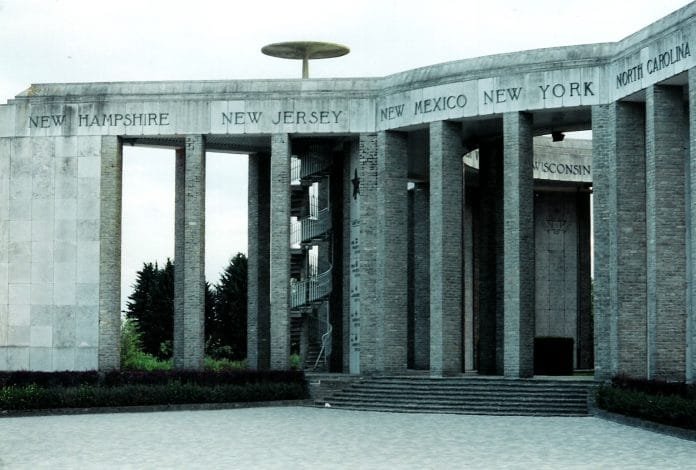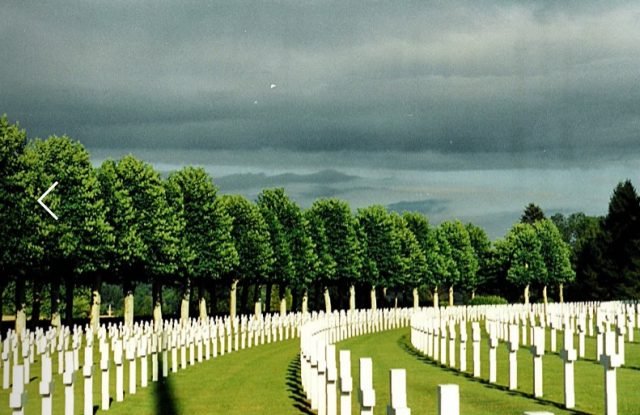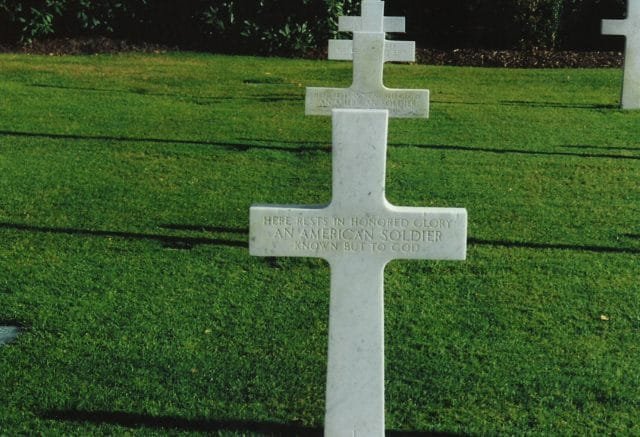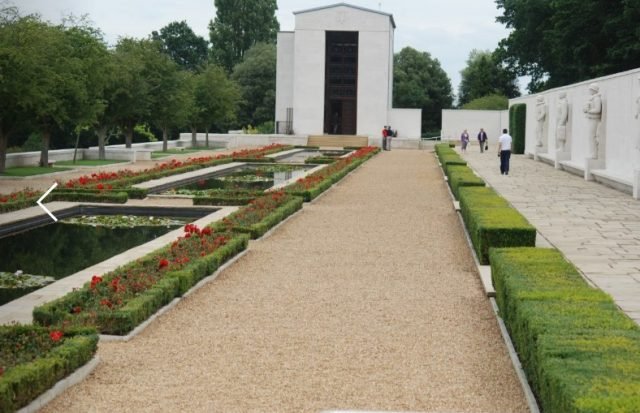
Modern warfare in WWI was fought in fields and forced soldiers to move into the ground for cover. The method to do this was the trench which became a means to survive the shelling that created thirty foot craters that would swallow both men and horses. The trenches for the allied side were as deep as eight to ten feet, which when one thinks about the bombs that could make thirty foot craters would make one very lucky if he did not get killed.
The Germans used trenches that were forty feet deep and had been fortified with concrete, and fitted with lighting, furniture, and even wallpaper. The British never fortified theirs because they were under the mistaken idea that the war would be over by Christmas of 1914. Trench warfare invited the use of attrition to starve out the enemy and would also leave many altercations in a stalemate with neither side having a decisive win. The trenches served as both defense and prisons because to leave them would almost guarantee death due to gunfire and shelling.
Trench foot, rats, disease, mud were all parts of the first modern war. Soldiers were rarely able to remain clean and dry, possess season appropriate clothing, shower, and were often infested with lice. The living conditions were deplorable with many trying rather unsuccessfully to sleep in the bottom of the water and mud filled trenches. Lack of sleep and resultant fatigue can greatly decrease alertness and fighting capabilities. Casualties at the end of WWI were thirty-seven million.
Barbed wire became an efficient way to repel offensive attacks. Tanks were developed to overcome this new impenetrable obstacle. Tanks were further fortified with metals that would be less impervious to most metal assault and were give more and more lethal weaponry to use to fire upon the enemy. Artillery fire was used as much against the barbed wire as it had previously been used against man.

Technologies had improved the ability to supply soldiers with untainted fresh food where before they had been subjected to eating rotten meat, which would most assuredly have taken a toll on the general health of those who consumed it. Anesthetic agents made amputations more bearable, as did the inventions of penicillin, sulfanilamide, and streptomycin which made the old scourge of gas gangrene a thing of the past. X-rays helped locate the metal fragments that found their way into human bodies and also made their removal more exacting. Wounded were receiving more prompt removal from the battle fields so they could receive medical attention in a more timely fashion.
Improved technology in craft that flew in the air and delivered bombs to those on the ground increased the ability to fight a war where the enemy never had to be seen face to face. The Zeppelins and small fighters used during WWI evolved into bombers which could deliver a devastating quantity of explosives that rained over Europe during WWII. Troops could be dropped from the sky into areas where they would engage the enemy. At first, they were dropped by parachutes and gliders and this eventually evolved into the ability to bring a helicopter to the ground to unload troops in a specific area, effectively evacuate the wounded, and to also fire upon the enemy.
While all of these offensive weapons were being used they caused the development of defensive weapons to counter them. Radar was created to “detect” aircraft before it came close enough to deliver its deadly load. Eventually there were ways devised that bullets, mortars, and shells, could be delivered to these planes and force them from the sky. Then there was anti radar equipment developed to stop radar from working. Non-combatants as well as soldiers became fair game as factories that supported war efforts were destroyed.
Depersonalization became the name of the game for war. The machine gun started this concept and the capability of airplanes to drop armaments from above and artillery to shoot from far distances all helped to take away the enemy’s face and his or her humanity. Civilians as well as soldiers became casualties of these new modern wars. It became easier to kill those one did not have to recognize as fellow human beings.

It was not long before the chivalric order of battle gave way to the modern ways of more efficient communication that was so necessary to the movement of the troops. Runners were replaced by radios and telephones and even the horse cavalry became obsolete as tanks and trucks became the new cavalry.
Perhaps the greatest effect of modern war is the immense number of people who could be killed and wounded and the vast amount of property that was destined to be destroyed. The use of poisonous gases, flamethrowers, and aerial bombardment would make new wars particularly horrific.
The use of communication that was not delivered face to face gave the impression that those in the rear did not often know what was happening on the front lines and that must be the only reason for some of the orders to have been made since so many died after following them. Conscription put together mass armies who seemed to be quite expendable. It was like there were always more warm bodies to take the place of the cold dead ones.
At the beginning of WWI there was still some idea of the nobility answering the call from your country to defend it against an aggressor. To not go would be deemed as a cowardly act that one would never recover from. The human population, especially in Europe, had no idea what industrialization would do to change the face of war. No longer would the enemies meet on a battlefield, often an agreed upon choice, and march towards each other while firing until one side surrendered or no one was left standing. The novelty of leaving boring jobs and classrooms was call enough to go to the aid of the country. The chore was to rid the world of bullies, the corrupt old-world order, and bring back civilization and decency.

Animosities played an important part in these wars. It was far easier to kill someone who looked different, practiced a different religion, or lived a foreign lifestyle than to kill someone who could just as well look like your neighbor or family member. The murder of Jews, Gypsies, Slavs, and others who were not considered of Aryan blood was accomplished by providing a gap with the use of differences in physical appearances, religious differences, perceived threats to the xenophobic, and blaming others for economic and social problems (Nazis).
Unconditional surrenders encouraged fights to the end. Modern war became a money-making opportunity for individuals and countries. Only human life was worth the loss. Diplomacy, politics, and economics are all in the same bed and the factor of loss of human life becomes inconsequential. Nationalism, racism, and ethnocentrism combined with increasing economic status make it too easy to forget the use of diplomacy and resort to aggression.
The modern wars which had been waged to maintain world democracy, but in actuality only gave Hitler freedom to wage his war, was to safe guard Poland from Hitler, but in the end, it was given to the Soviet Union. The countries of Korea and Vietnam were divided between the USSR and America who orchestrated not so successful political regimes into power in countries where the United States would like to foster democracy.

By the end of WWI, the myth of war was in its death throes. Writers such as Sassoon, Frank Richards, Robert Graves, Erich Maria Remarque, Edmund Blunden, Wilfred Owen, Herbert Read, James Jones, Norman Mailer, Randall Jarrell, Richard Eberhart, Kermit Stewart, Heinrich Boll, Howard Nemerov, John Clark Pratt, John Ketwig, Ron Kovic, Tim O-Brien and others have written personal accounts, diaries, and narratives in order to show what war was really like. They had gone a long way toward dispelling the myth of war that was perpetuated before WWI and had tried to offer witness for others who were no longer there to tell their stories.
These famous authors recount the horrors, murder, filth, lapses in humanity, mistakes, and emotional responses through the experience of being included in fighting in a war. Starting with the authors who wrote during WWI, there would never again be a feeling that war should exist at any cost. Even though these horrendous, gut wrenching experiences are there for all to read, there never seems to be an enduring effort to stop going to war. Modern war had made it possible to kill and wound hundreds of thousands of people and to devastate land and property with little to no direct personal involvement; it has taken the faces out of killing. Wars represent an opportunity to make money. Wars keep the world in a state of turmoil so that the unseen threats can rear their ugly heads.

Literature is a witness to what the writers have shared with the readers about their own personal experiences, reactions to these experiences, PTSD effects, and how they have moved or not moved forward with their lives. Some have died of old age, others left early either due to injuries, deaths in war, or to suicides. Reading their words we have felt as though we were in the trenches, enduring the shelling, wallowing in the mud, ill and infested with lice, hearing the screams of wounded or dying men and animals, starving, filthy, lonely, scared, confused, deaf, in the process of dying, hurting, in the Pacific and European fronts of World War II, witnessing the atrocities committed on all sides, smelling and seeing the concentration camps, watching paratroopers shot down from the sky, sitting in the exposed ball turret and watching flack come at you, falling from the sky or watching others fall in flames, and in the jungles witnessing rapes, massacres of unarmed children and women, felt the confusion of not recognizing the enemy, witnessing the devastation that mines can leave, feeling the paralysis, feeling the boredom mixed with terror, or trying to control the fear that the next piece of metal will have your name on it.
This writer doubts that any of us, who have not experienced combat conditions, would ever be able to really understand all that the soldiers though the wars have endured, but we can certainly empathize and develop some sense of what it might have been like.
Literature about Vietnam tends to be more pessimistic than the other wars before it. Vietnam vets come from families where one or both parents, uncles, teachers or coaches could have already fought in a war (Korea or WWII) at a time when fighting seemed to have a more noble reason behind it. These people went and did what they considered to be their duty and expected the Vietnam era soldiers to do the same. During World War II, American had been attacked on its home soil so this made the war very personal.
The Vietnam War was fought thousands of miles away from America in a land that many knew nothing about. Communist aggression, if that was the reason to fight in Vietnam, did not seem like an actual “in your face” enemy like the Nazis and Japanese. To refuse to go to Vietnam meant imprisonment or being branded a coward. America did not support the Vietnam veterans as they had those of the three previous wars of the century.
Not many really seemed to understand what was going on in Vietnam. The media either distorted what they discovered or were told to do so by the government or military. The war became fictionalized and the returning soldiers were not encouraged to talk about their experiences when they arrived back in the states. Eventually all the soldiers wanted to do was to survive their year in Vietnam and escape with limbs and other body parts intact. They wanted to get home, but when they were home they wanted to be back and be with their friends who they had left behind. They were afraid for those who were still there and worried that they would not make it out.
The war in Vietnam was seen as colonialist, immoral, illegal, and unnecessary. Ignorance of Asian social and political mores, languages, and history did nothing to further the interests in the Vietnamese people that America espoused to save from the clutches of Communism. The satiric, ironic, subversive feelings the vets who consigned to Vietnam was reflected in the literature of this period. Pratt was careful in describing what was happening to him when he communicated with his parents, but when he wrote to Bob he was not sure that he would get out alive. He talks about how angry he is because he feels that only the grunts in the field care what is going on. He would think that it was all over even if he was not in imminent danger. The sights of the dead and wounded shake him and he feels that their deaths and suffering are for nothing. He is angry at America for letting the conflict happen in the first place. He did not think that it was worth while to be in Vietnam, and that it was a waste.
Clodfelter actually writes that “There was no doubt that they had tricked us, deceived us—them with their John Wayne charging up Mount Suribachi, with their Gary Cooper –as-Sergeant York rounding up half the German Army and sharp shooting to death the other half. Have you ever seen a two-hour long war movie that shows for an hour and fifty-nine minutes a soldier climbing a muddy mountain under the weight of a sixty-pound pack and 110-degree heat, and for only the last-minute scenes of combat? That was the way the war was for us……(682)
He writes about there being two wars, the one that the newspapers reported and that were shown on the nightly news and the daily Five O’clock Follies and the long-haired college students who protested. The other war was the one only the men and women in Vietnam were familiar with. You know, the war with the sunstroke, heat, rain, jungle rot, sandbags, heat exhaustion, malaria, boredom, thorns, bacteria, fungus, and humidity. Trying to figure out who the enemy was turned out to be a big part of the problem (683.) Killing the enemy was not the problem, but identifying him was. Wining victories was the government and military’s prime concern, not if soldiers were lost. The soldier’s value was only in relation to what or how much its sacrifice would bring (685).
Kovic writes, “What’s the matter…Can’t a disabled veteran who fought for his country sit up front?” (737) He continued, “Yeah, that’s what I thought…I bet none of you fought in the war and you guys are trying to throw me out of the convention. I’ve got just as much right to be up front here as any of these delegates. I fought for that right and I was born on the Fourth of July.” (738) He has been to the VA hospitals and had first hand seen how poorly the vets are being cared for. He wants to get someone to hear and change what is happening. There was nothing wonderful about the fact that Nixon was seeking re-election after he had deepened US involvement in Vietnam. Certainly, any pessimism expressed in Kovic’s story would be expected as he had given three-quarters of his body after two tours in Vietnam and he only received for this a spit in the face.
The graphic nature of Vietnam War literature comes from the willingness to share what had happened to these individuals with anyone who cared to read. Sometimes the descriptions of the actual horrific sights are simply used to help the writer to come to terms with what he has witnessed. It is his way of coming to terms with the horrors that no one should ever really be subjected to, and to increase his chances of mentally surviving so that he may have a life without the constant flashbacks, dreams, and disruptions these can bring to living. The willingness to describe the incidents are also a way to show how truly horrible things were. Much of the close contact encounters were by small groups of individuals, many forgotten and acting on their own without officers in their midst.
When it came down to whether to go on a patrol that would almost guarantee death to most or all, it is an easy decision to go out and not try to find the enemy. Perhaps these descriptions were proof that this war was far removed from all previous wars of the century. People who are described as “baby-killers” and “drug crazed murderers” need to show the people who did not have their lives altered during this time, what they could have experienced if they had been on the lines in Vietnam. “Yes, you can label me a baby-killer if you want but I will give you the full picture of what I was subjected to and then try to judge if you would have responded in like fashion.” With what was really a counterinsurgency in Vietnam, war fare had moved back toward the hand to hand combat of earlier centuries because there seemed to be more incidents of face to face confrontations.
Vietnam could not be fought as a peninsular war because the enemy could move into Laos and Cambodia, had no air power, and seldom had tanks or artillery. American was forced to operate in two different modes, the first being a counterinsurgency mode combining an active civil affairs programs and working with local forces to deny enemy access to support from local population and secondly active search and destroy operations using air power typically with the intent of seeking out enemy formations in semi or unpopulated areas and drawing them into short term pitch battles where our air mobility, artillery, and air supremacy could be brought to bear.
The problem, however, starting with the 1968 presidential campaign is that it was being made clear that our long-term goal in Vietnam would be a withdrawal strategy and a negotiated peace. This eliminated the need on the part of the enemy to maintain a viable insurgency infrastructure in the south or to restore the infrastructure that had been decimated during the 1968 Tet Offensive. With the deterioration of America’s political will there was no more need for a strategy that would deal either political or strategic gain in Vietnam, but rather a strategy that would yield political gain in the United States.
Operational goals for Communist forces in the South narrowed to primarily consist of interdicting and destroying small American units and or bases with overwhelming force. The goal of this of course was to keep a steady flow of casualty figures in front of an American people who had lost all faith in the South Vietnamese government and its military and who no longer believed in either the war itself of our political and military leadership.
The war moved from an insurgency struggle in its early years to a blood bath in the south and American terror bombing in the North. It became a war of attrition and a war of will. The North Vietnamese needed little to continue their fight.
The primary enemy of the soldier in Vietnam was the American military.

War Literature Reviewed:
• Graves, Robert, Goodbye To All That.
• Blunden, Edmund, Undertones of War and Third Ypres.
• Boll, Heinrich, Der Zug war pünktlich (The Train Was on Time).
• Clodfelter, Michael. Mad Minutes and Vietnam Months: A Soldier’s Memoir.
• Jones, James, WWII: A Chronicle of Soldiering, From Here to Eternity, and The Thin Red Line.
• Eberhart, Richard, Poems: New and Selected containing “The Fury of Aerial Bombardment” and other poems written during his service including “Dam Neck, Virginia” and “World War”
• Ketwig, John, …and a hard rain fell: A GI’s True Story of the War in Vietnam.
• Kovic, Ron, Born on the Fourth of July.
• Mailer, Norman, The Naked and the Dead.
• Nemerov, Howard, “The War in the Air” from The Collected Poems of Howard Nemerov.
• Obrien, Tim, The Things They Carried.
• Owen, Wilfred, “Dulce et Decorum est”, “Insensibility”, “Anthem for Doomed Youth”, “Futility”, “Exposure” and “Strange Meeting”.
• Pratt, John Clark, Laotian Fragments and Vietnam Voices: Perspectives on the War Years, 1941-1975.
• Read, Herbert, Naked Warriors.
• Remarque, Erich Maria, All Quiet on the Western Front.
• Richards, Frank, (Francis Philip Woodruff), Old Soldiers Never Die.
• Sassoon Siegfried, The War Poems.
• Stewart, Kermit, WWII letters.

Carol graduated from Riverside White Cross School of Nursing in Columbus, Ohio and received her diploma as a registered nurse. She attended Bowling Green State University where she received a Bachelor of Arts Degree in History and Literature. She attended the University of Toledo, College of Nursing, and received a Master’s of Nursing Science Degree as an Educator.
She has traveled extensively, is a photographer, and writes on medical issues. Carol has three children RJ, Katherine, and Stephen – one daughter-in-law; Katie – two granddaughters; Isabella Marianna and Zoe Olivia – and one grandson, Alexander Paul. She also shares her life with her husband Gordon Duff, many cats, and two rescues.
ATTENTION READERS
We See The World From All Sides and Want YOU To Be Fully InformedIn fact, intentional disinformation is a disgraceful scourge in media today. So to assuage any possible errant incorrect information posted herein, we strongly encourage you to seek corroboration from other non-VT sources before forming an educated opinion.
About VT - Policies & Disclosures - Comment Policy




Comments are closed.